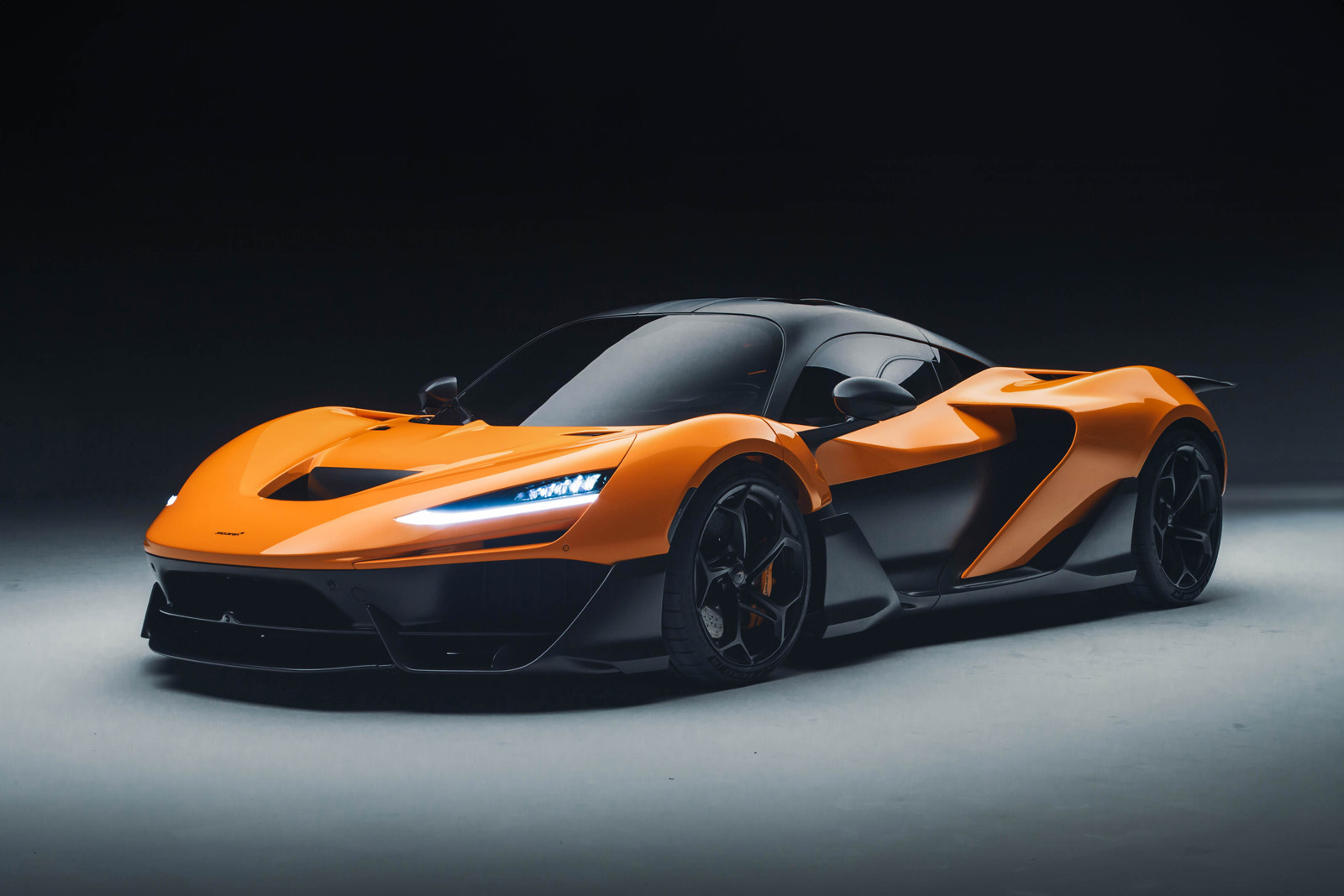There are active front and rear wings, including the W1’s signature feature of an Active Long Tail rear wing, which extends 300mm rearwards rather than upwards to work with the underfloor and rear diffuser to create extra downforce without adding drag.
This function is available on track only. In the aero’s most extreme setting, Race mode, the W1 produces 350kg of front downforce and 650kg at the rear for a total of 1000kg.
Yet, as chief aero engineer Robin Algoo explained, what’s different about the W1 beyond the headline numbers is its stability and predictability while cornering at such high speeds, which allows it to lap the Nardò handling circuit (McLaren’s reference track) 3sec quicker than a Senna.
The starting point for the aero package on the W1 is the central Aerocell carbonfibre monocoque, which the car is built around and integrates the two seats for the cabin to allow for a shorter wheelbase.
Almost every component and installation in the W1, from the mounting of the engine to the suspension design, has been done with aero performance in mind. For that reason, the doors are anhedral rather than dihedral, a McLaren first, and the scoop on the roof, recognisable from the F1 and P1, acts as a flow diverter to the rear.
In road mode, the active front wing lifts and the Active Long Tail rear wing integrates into the body.

